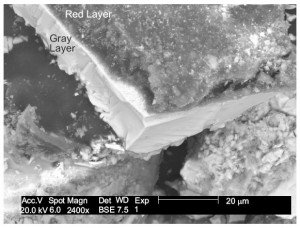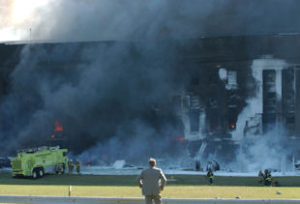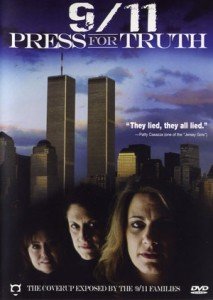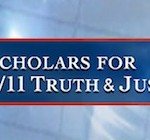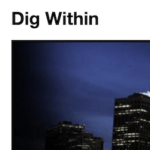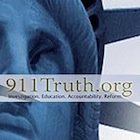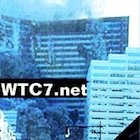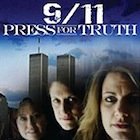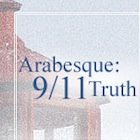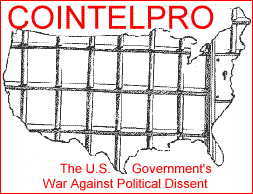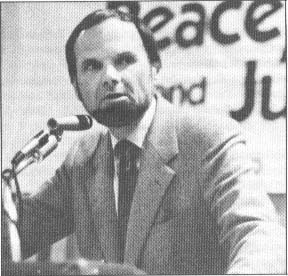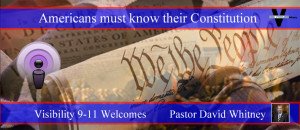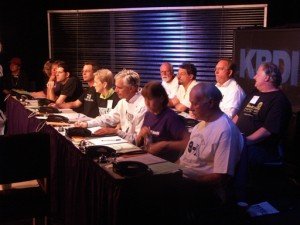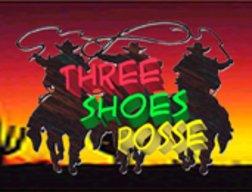COINTELPRO Revisited – Spying & Disruption
by Brian Glick
INTRODUCTION
Activists across the country report increasing government harassment and disruption of their work:
-In the Southwest, paid informers infiltrate the church services, Bible classes and support networks of clergy and lay workers giving sanctuary to refugees from El Salvador and Guatemala.
-In Alabama, elderly Black people attempting for the first time to exercise their right to vote are interrogated by FBI agents and hauled before federal grand juries hundreds of miles from their homes.
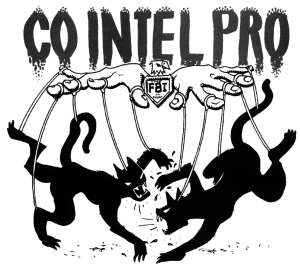 -In New England, a former CIA case officer cites examples from his own past work to warn college students of efforts by undercover operatives to misdirect and discredit protests against South African and US racism.
-In New England, a former CIA case officer cites examples from his own past work to warn college students of efforts by undercover operatives to misdirect and discredit protests against South African and US racism.
-In the San Francisco Bay Area, activists planning anti-nuclear civil disobedience learn that their meetings have been infiltrated by the US Navy.
-In Detroit, Seattle, and Philadelphia, in Cambridge, MA, Berkeley,CA., Phoenix, AR., and Washington, DC., churches and organizations opposing US policies in Central America report obviously political break-ins in which important papers are stolen or damaged, while money and valuables are left untouched. License plates on a car spotted fleeing one such office have been traced to the US National Security Agency.
-In Puerto Rico, Texas and Massachusetts, labor leaders, community organizers, writers and editors who advocate Puerto Rican independence are branded by the FBI as “terrorists,” brutally rounded-up in the middle of the night, held incommunicado for days and then jailed under new preventive detention laws.
-The FBI puts the same “terrorist” label on opponents of US intervention in El Salvador, but refuses to investigate the possibility of a political conspiracy behind nation-wide bombings of abortion clinics.
-Throughout the country, people attempting to see Nicaragua for themselves find their trips disrupted, their private papers confiscated, and their homes and offices plagued by FBI agents who demand detailed personal and political information.
These kinds of government tactics violate our fundamental constitutional rights. They make it enormously difficult to sustain grass-roots organizing. They create an atmosphere of fear and distrust which undermines any effort to challenge official policy.
Similar measures were used in the 1960s as part of a secret FBI program known as “COINTELPRO.” COINTELPRO was later exposed and officially ended. But the evidence shows that it actually persisted and that clandestine operations to discredit and disrupt opposition movements have become an institutional feature of national and local government in the US. This pamphlet is designed to help current and future activists learn from the history of COINTELPRO, so that our movements can better withstand such attack.
The first section gives a brief overview of what we know the FBI did in the 60s. It explains why we can expect similar government intervention in the 80s and beyond, and offers general guidelines for effective response.
The main body of the pamphlet describes the specific methods which have previously been used to undermine domestic dissent and suggests steps we can take to limit or deflect their impact.
A final chapter explores ways to mobilize broad public protest against this kind of repression.
Further readings and groups that can help are listed in back. The pamphlet’s historical analysis is based on confidential internal documents prepared by the FBI and police during the 60s.
It also draws on the post-60s confessions of disaffected government agents, and on the testimony of public officials before Congress and the courts. Though the information from these sources is incomplete, and much of what was done remains secret, we now know enough to draw useful lessons for future organizing.
The suggestions included in the pamphlet are based on the author’s 20 years experience as an activist and lawyer, and on talks with long-time organizers in a broad range of movements. They are meant to provide starting points for discussion, so we can get ready before the pressure intensifies. Most are a matter of common sense once the methodology of covert action is understood. Please take these issues seriously. Discuss the recommendations with other activists. Adapt them to the conditions you face. Point out problems and suggest other approaches.
It is important that we begin now to protect our movements and ourselves.
A HISTORY TO LEARN FROM
WHAT WAS COINTELPRO?
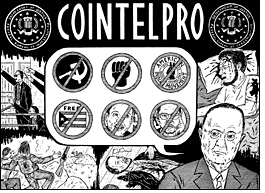 “COINTELPRO” was the FBI’s secret program to undermine the popular upsurge which swept the country during the 1960s. Though the name stands for “Counterintelligence Program,” the targets were not enemy spies. The FBI set out to eliminate “radical” political opposition inside the US. When traditional modes of repression (exposure, blatant harassment, and prosecution for political crimes) failed to counter the growing insurgency, and even helped to fuel it, the Bureau took the law into its own hands and secretly used fraud and force to sabotage constitutionally- protected political activity. Its methods ranged far beyond surveillance, and amounted to a domestic version of the covert action for which the CIA has become infamous throughout the world.
“COINTELPRO” was the FBI’s secret program to undermine the popular upsurge which swept the country during the 1960s. Though the name stands for “Counterintelligence Program,” the targets were not enemy spies. The FBI set out to eliminate “radical” political opposition inside the US. When traditional modes of repression (exposure, blatant harassment, and prosecution for political crimes) failed to counter the growing insurgency, and even helped to fuel it, the Bureau took the law into its own hands and secretly used fraud and force to sabotage constitutionally- protected political activity. Its methods ranged far beyond surveillance, and amounted to a domestic version of the covert action for which the CIA has become infamous throughout the world.
HOW DO WE KNOW ABOUT IT?
COINTELPRO was discovered in March, 1971, when secret files were removed from an FBI office and released to news media. Freedom of Information requests, lawsuits, and former agents’ public confessions deepened the exposure until a major scandal loomed. To control the damage and re-establish government legitimacy in the wake of Vietnam and Watergate, Congress and the courts compelled the FBI to reveal part of what it had done and to promise it would not do it again. Much of what has been learned, and copies of some of the actual documents, can be found in the readings listed at the back of this pamphlet.
HOW DID IT WORK?
The FBI secretly instructed its field offices to propose schemes to “misdirect, discredit, disrupt and otherwise neutralize “specific individuals and groups. Close coordination with local police and prosecutors was encouraged. Final authority rested with top FBI officials in Washington, who demanded assurance that “there is no possibility of embarrassment to the Bureau.” More than 2000 individual actions were officially approved. The documents reveal three types of methods:
- 1. Infiltration: Agents and informers did not merely spy on political activists. Their main function was to discredit and disrupt. Various means to this end are analyzed below.
- 2. Other forms of deception: The FBI and police also waged psychological warfare from the outside–through bogus publications, forged correspondence, anonymous letters and telephone calls, and similar forms of deceit.
- 3. Harassment, intimidation and violence: Eviction, job loss, break-ins, vandalism, grand jury subpoenas, false arrests, frame- ups, and physical violence were threatened, instigated or directly employed, in an effort to frighten activists and disrupt their movements. Government agents either concealed their involvement or fabricated a legal pretext. In the case of the Black and Native American movements, these assaults–including outright political assassinations–were so extensive and vicious that they amounted to terrorism on the part of the government.
WHO WERE THE MAIN TARGETS?
The most intense operations were directed against the Black movement, particularly the Black Panther Party. This resulted from FBI and police racism, the Black community’s lack of material resources for fighting back, and the tendency of the media–and whites in general–to ignore or tolerate attacks on Black groups. It also reflected government and corporate fear of the Black movement because of its militance, its broad domestic base and international support, and its historic role in galvanizing the entire Sixties’ upsurge. Many other activists who organized against US intervention abroad or for racial, gender or class justice at home also came under covert attack. The targets were in no way limited to those who used physical force or took up arms. Martin Luther King, David Dellinger, Phillip Berrigan and other leading pacifists were high on the list, as were projects directly protected by the Bill of Rights, such as alternative newspapers.
The Black Panthers came under attack at a time when their work featured free food and health care and community control of schools and police, and when they carried guns only for deterrent and symbolic purposes. It was the terrorism of the FBI and police that eventually provoked the Panthers to retaliate with the armed actions that later were cited to justify their repression.
Ultimately the FBI disclosed six official counterintelligence programs: Communist Party-USA (1956-71); “Groups Seeking Independence for Puerto Rico” (1960-71); Socialist Workers Party (1961-71); “White Hate Groups” (1964-71); “Black Nationalist Hate Groups” (1967-71); and “New Left” (1968- 71).The latter operations hit anti-war, student, and feminist groups. The “Black Nationalist” caption actually encompassed Martin Luther King and most of the civil rights and Black Power movements. The “white hate” program functioned mainly as a cover for covert aid to the KKK and similar right-wing vigilantes, who were given funds and information, so long as they confined their attacks to COINTELPRO targets. FBI documents also reveal covert action against Native American, Chicano, Philippine, Arab- American, and other activists, apparently without formal Counterintelligence programs.
WHAT EFFECT DID IT HAVE?
COINTELPRO’s impact is difficult to fully assess since we do not know the entire scope of what was done (especially against such pivotal targets as Malcolm X, Martin Luther King, SNCC and SDS),and we have no generally accepted analysis of the Sixties. It is clear,however, that:
-COINTELPRO distorted the public’s view of radical groups in a way that helped to isolate them and to legitimize open political repression.
-It reinforced and exacerbated the weaknesses of these groups, making it very difficult for the inexperienced activists of the Sixties to learn from their mistakes and build solid, durable organizations.
-Its violent assaults and covert manipulation eventually helped to push some of the most committed and experienced groups to withdraw from grass-roots organizing and to substitute armed actions which isolated them and deprived the movement of much of its leadership.
-COINTELPRO often convinced its victims to blame themselves and each other for the problems it created, leaving a legacy of cynicism and despair that persists today.
-By operating covertly, the FBI and police were able to severely weaken domestic political opposition without shaking the conviction of most US people that they live in a democracy, with free speech and the rule of law.
THE DANGER WE FACE
DID COINTELPRO EVER REALLY END?
Public exposure of COINTELPRO in the early 1970s elicited a flurry of reform. Congress, the courts and the mass media condemned government “intelligence abuses.” Municipal police forces officially disbanded their red squads. A new Attorney General notified past victims of COINTELPRO and issued Guidelines to limit future operations. Top FBI officials were indicted (albeit for relatively minor offenses), two were convicted, and several others retired or resigned. J. Edgar Hoover–the egomaniacal, crudely racist and sexist founder of the FBI–died, and a well-known federal judge, William Webster, eventually was appointed to clean house and build a “new FBI.”
Behind this public hoopla, however, was little real improvement in government treatment of radical activists. Domestic covert operations were briefly scaled down a bit, after the 60s’ upsurge had largely subsided, due in part to the success of COINTELPRO. But they did not stop. In April, 1971, soon after files had been taken from one of its offices, the FBI instructed its agents that “future COINTELPRO actions will be considered on a highly selective, individual basis with tight procedures to insure absolute security.” The results are apparent in the record of the subsequent years:
-A virtual war on the American Indian Movement, ranging from forgery of documents, infiltration of legal defense committees, diversion of funds, intimidation of witnesses and falsification of evidence, to the para-military invasion of the Pine Ridge Reservation in South Dakota, and the murder of Anna Mae Aquash, Joe Stuntz and countless others;
-Sabotage of efforts to organize protest demonstrations at the 1972 Republican and Democratic Party conventions. The attempted assassination of San Diego Univ. Prof. Peter Bohmer, by a “Secret Army Organization” of ex-Minutemen formed, subsidized, armed, and protected by the FBI, was a part of these operations;
-Concealment of the fact that the witness whose testimony led to the 1972 robbery-murder conviction of Black Panther leader Elmer “Geronimo” Pratt was a paid informer who had worked in the BPP under the direction of the FBI and the Los Angeles Police Department;
-Infiltration and disruption of the Vietnam Veterans Against the War, and prosecution of its national leaders on false charges (Florida, 1971-74);
-Formation and operation of sham political groups such as “Red Star Cadre,” in Tampa, Fla., and the New Orleans “Red Collective” (1972-76);
-Mass interrogation of lesbian and feminist activists, threats of subpoenas, jailing of those who refused to cooperate, and disruption of women’s health collectives and other projects (Lexington, KY., Hartford and New Haven,Conn., 1975);
-Harassment of the Hispanic Commission of the Episcopal Church and numerous other Puerto Rican and Chicano religious activists and community organizers (Chicago, New York City, Puerto Rico, Colorado and New Mexico, 1977);
-Entrapment and frame-up of militant union leaders (NASCO shipyards,San Diego, 1979); and
-Complicity in the murder of socialist labor and community organizers (Greensboro, N.C., 1980).
IS IT A THREAT TODAY?
All this, and maybe more, occurred in an era of reform. The use of similar measures in today’s very different times cannot be itemized in such detail, since most are still secret. The gravity of the current danger is evident, however, from the major steps recently taken to legitimize and strengthen political repression, and from the many incidents which are coming to light despite stepped-up security.
 The ground-work for public acceptance of repression has been laid by President Reagan’s speeches reviving the old red-scare tale of worldwide “communist take-overs” and adding a new bogeyman in the form of domestic and international “terrorism.” The President has taken advantage of the resulting political climate to denounce the Bill of Rights and to red-bait critics of US intervention in Central America. He has pardoned the FBI officials convicted of COINTELPRO crimes, praised their work, and spoken favorably of the political witch hunts he took part in during the 1950s.
The ground-work for public acceptance of repression has been laid by President Reagan’s speeches reviving the old red-scare tale of worldwide “communist take-overs” and adding a new bogeyman in the form of domestic and international “terrorism.” The President has taken advantage of the resulting political climate to denounce the Bill of Rights and to red-bait critics of US intervention in Central America. He has pardoned the FBI officials convicted of COINTELPRO crimes, praised their work, and spoken favorably of the political witch hunts he took part in during the 1950s.For the first time in US history, government infiltration to “influence” domestic political activity has received official sanction. On the pretext of meeting the supposed terrorist threat, Presidential Executive Order 12333 (Dec. 4, 1981) extends such authority not only to the FBI, but also to the military and, in some cases, the CIA. History shows that these agencies treat legal restriction as a kind of speed limit which they feel free to exceed, but only by a certain margin. Thus, Reagan’s Executive Order not only encourages reliance on methods once deemed abhorrent, it also implicitly licenses even greater, more damaging intrusion. Government capacity to make effective use of such measures has also been substantially enhanced in recent years:
-Judge Webster’s highly-touted reforms have served mainly to modernize the FBI and make it more dangerous. Instead of the back- biting competition which impeded coordination of domestic counter- insurgency in the 60s, the Bureau now promotes inter-agency cooperation. As an equal opportunity employer, it can use Third World and female agents to penetrate political targets more thoroughly than before. By cultivating a low-visibility corporate image and discreetly avoiding public attack on prominent liberals, the FBI has regained respectability and won over a number of former critics.
-Municipal police forces have similarly revamped their image while upgrading their repressive capabilities. The police “red squads” that infiltrated and harassed the 60s’ movements have been revived under other names and augmented by para-military SWAT teams and tactical squads as well as highly-politicized community relations and “beat rep” programs, in which Black, Hispanic and female officers are often conspicuous. Local operations are linked by FBI-led regional anti-terrorist task forces and the national Law Enforcement Intelligence Unit (LEIU).
-Increased military and CIA involvement has added political sophistication and advanced technology. Army Special Forces and other elite military units are now trained and equipped for counter-insurgency (known as”low-intensity warfare”). Their manuals teach the essential methodology of COINTELPRO, stressing earlier intervention to neutralize potential opposition before it can take hold.
The CIA’s expanded role is especially ominous. In the 60s, while legally banned from “internal security functions,” the CIA managed to infiltrate the Black, student and antiwar movements. It also made secret use of university professors, journalists, labor leaders, publishing houses, cultural organizations and philanthropic fronts to mold US public opinion. But it apparently felt compelled to hold back–within the country–from the kinds of systematic political destabilization, torture, and murder which have become the hallmark of its operations abroad. Now, the full force of the CIA has been unleashed at home.
-All of the agencies involved in covert operations have had time to learn from the 60s and to institute the “tight procedures to insure absolute security” that FBI officials demanded after COINTELPRO was exposed in 1971. Restoration of secrecy has been made easier by the Administration’s steps to shield covert operations from public scrutiny. Under Reagan, key FBI and CIA files have been re-classified “top secret.” The Freedom of Information Act has been quietly narrowed through administrative reinterpretation. Funds for covert operations are allocated behind closed doors and hidden in CIA and defense appropriations.
Government employees now face censorship even after they retire, and new laws make it a federal crime to publicize information which might tend to reveal an agent’s identity. Despite this stepped-up security, incidents frighteningly reminiscent of 60s’ COINTELPRO have begun to emerge.
The extent of the infiltration, burglary and other clandestine government intervention that has already come to light is alarming. Since the vast majority of such operations stay hidden until after the damage has been done, those we are now aware of undoubtedly represent only the tip of the iceberg. Far more is sure to lie beneath the surface.
Considering the current political climate, the legalization of COINTELPRO, the rehabilitation of the FBI and police, and the expanded role of the CIA and military, the recent revelations leave us only one safe assumption: that extensive government covert operations are already underway to neutralize today’s opposition movements before they can reach the massive level of the 60s.
WHAT CAN WE DO ABOUT IT?
Domestic covert action has now persisted in some form through at least the last seven presidencies. It grew from one program to six under Kennedy and Johnson. It flourished when an outspoken liberal, Ramsey Clark, was Attorney General (1966-68). It is an integral part of the established mode of operation of powerful, entrenched agencies on every level of government. It enables policy-makers to maintain social control without detracting from their own public image or the perceived legitimacy of their method of government. It has become as institutional in the US as the race, gender, class and imperial domination it serves to uphold.
Under these circumstances, there is no reason to think we can eliminate COINTELPRO simply by electing better public officials. Only through sustained public education and mobilization, by a broad coalition of political, religious and civil libertarian activists, can we expect to limit it effectively.
In most parts of the country, however, and certainly on a national level, we lack the political power to end covert government intervention, or even to curb it substantially. We therefore need to learn how to cope more effectively with this form of repression.
The next part of this pamphlet examines the methods that were used to discredit and disrupt the movements oft he 60s and suggests steps we can take to deflect or reduce their impact in the 80s.
A CHECK-LIST OF ESSENTIAL PRECAUTIONS:
-Check out the authenticity of any disturbing letter, rumor, phone call or other communication before acting on it.
-Deal openly and honestly with the differences within our movements (race, gender, class, age, religion, national origin, sexual orientation, personality, experience, physical and intellectual capacities, etc.) before the FBI and police exploit them to tear us apart.
-Don’t rush to expose a suspected agent. Instead, directly criticize what the suspect says and does. Intra-movement witch hunts only help the government create distrust and paranoia.
-Support whoever comes under government attack. Don’t be put off by political slander, such as recent attempts to smear radical activists as “terrorists.” Organize public opposition to FBI investigations, grand juries, show trials and other forms of political harassment.
-Above all, do not let them divert us from our main work. Our most powerful weapon against political repression is effective organizing around the needs and issues which directly affect people’s lives.
WHAT THEY DO & HOW WE CAN PROTECT OURSELVES
INFILTRATION BY AGENTS OR INFORMERS
Agents are law enforcement officers disguised as activists.
Informers are non-agents who provide information to a law enforcement or intelligence agency. They may be recruited from within a group or sent in by an agency, or they may be disaffected former members or supporters.
Infiltrators are agents or informers who work in a group or community under the direction of a law enforcement or intelligence agency. During the 60s the FBI had to rely on informers (who are less well trained and harder to control) because it had very few black, Hispanic or female agents, and its strict dress and grooming code left white male agents unable to look like activists. As a modern equal opportunity employer, today’s FBI has fewer such limitations.
What They Do: Some informers and infiltrators quietly provide information while keeping a low profile and doing whatever is expected of group members. Others attempt to discredit a target and disrupt its work. They may spread false rumors and make unfounded accusations to provoke or exacerbate tensions and splits. They may urge divisive proposals, sabotage important activities and resources, or operate as “provocateurs” who lead zealous activists into unnecessary danger. In a demonstration or other confrontation with police, such an agent may break discipline and call for actions which would undermine unity and detract from tactical focus.
Infiltration As a Source of Distrust and Paranoia: While individual agents and informers aid the government in a variety of specific ways, the general use of infiltrators serves a very special and powerful strategic function. The fear that a group may be infiltrated often intimidates people from getting more involved. It can give rise to a paranoia which makes it difficult to build the mutual trust which political groups depend on. This use of infiltrators, enhanced by covertly-initiated rumors that exaggerate the extent to which a particular movement or group has been penetrated, is recommended by the manuals used to teach counter-insurgency in the U.S. and Western Europe.
Covert Manipulation to Make A Legitimate Activist Appear to be an Agent: An actual agent will often point the finger at a genuine, non-collaborating and highly-valued group member, claiming that he or she is the infiltrator. The same effect, known as a “snitch jacket,” has been achieved by planting forged documents which appear to be communications between an activist and the FBI, or by releasing for no other apparent reason one of a group of activists who were arrested together. Another method used under COINTELPRO was to arrange for some activists, arrested under one pretext or another, to hear over the police radio a phony broadcast which appeared to set up a secret meeting between the police and someone from their group.
GUIDELINES FOR COPING WITH INFILTRATION:
- l. Establish a process through which anyone who suspects an informer (or other form of covert intervention) can express his or her fears without scaring others. Experienced people assigned this responsibility can do a great deal to help a group maintain its morale and focus while, at the same time, centrally consolidating information and deciding how to use it. This plan works best when accompanied by group discussion of the danger of paranoia, so that everyone understands and follows the established procedure.
- 2. To reduce vulnerability to paranoia and “snitch jackets”, and to minimize diversion from your main work, it generally is best if you do not attempt to expose a suspected agent or informer unless you are certain of their role. (For instance, they surface to make an arrest, testify as a government witness or in some other way admit their identity). Under most circumstances, an attempted exposure will do more harm than the infiltrator’s continued presence. This is especially true if you can discreetly limit the suspect’s access to funds, financial records, mailing lists, discussions of possible law violations, meetings that plan criminal defense strategy, and similar opportunities.
- 3. Deal openly and directly with the form and content of what anyone says and does, whether the person is a suspected agent, has emotional problems, or is simply a sincere, but naive or confused person new to the work.
- 4. Once an agent or informer has been definitely identified, alert other groups and communities by means of photographs, a description of their methods of operation, etc. In the 60s, some agents managed even after their exposure in one community to move on and repeat their performance in a number of others.
- 5. Be careful to avoid pushing a new or hesitant member to take risks beyond what that person is ready to handle, particularly in situations which could result in arrest and prosecution. People in this position have proved vulnerable to recruitment as informers.
OTHER FORMS OF DECEPTION
Bogus leaflets, pamphlets, etc.: COINTELPRO documents show that the FBI routinely put out phony leaflets, posters, pamphlets, etc. to discredit its targets. In one instance, agents revised a children’s coloring book which the Black Panther Party had rejected as anti-white and gratuitously violent, and then distributed a cruder version to backers of the Party’s program of free breakfasts for children, telling them the book was being used in the program.
False media stories: The FBI’s documents expose collusion by reporters and news media that knowingly published false and distorted material prepared by Bureau agents. One such story had Jean Seberg, a noticeably pregnant white film star active in anti-racist causes, carrying the child of a prominent Black leader. Seberg’s white husband, the actual father, has sued the FBI as responsible for her resulting still-birth, breakdown, and suicide.
Forged correspondence: Former employees have confirmed that the FBI and CIA have the capacity to produce “state of the art” forgery. The U.S. Senate’s investigation of COINTELPRO uncovered a series of letters forged in the name of an intermediary between the Black Panther Party’s national office and Panther leader Eldridge Cleaver, in exile in Algeria. The letters proved instrumental in inflaming intra-party rivalries that erupted into the bitter public split that shattered the Party in the winter of 1971.
Anonymous letters and telephone calls: During the 60s, activists received a steady flow of anonymous letters and phone calls which turn out to have been from government agents. Some threatened violence. Others promoted racial divisions and fears. Still others charged various leaders with collaboration, corruption, sexual affairs with other activists’ mates, etc. As in the Seberg incident, inter-racial sex was a persistent theme. The husband of one white woman involved in a bi-racial civil rights group received the following anonymous letter authored by the FBI:
–Look, man, I guess your old lady doesn’t get enough at home or she wouldn’t be shucking and jiving with our Black Men in ACTION, you dig? Like all she wants to integrate is the bedroom and us Black Sisters ain’t gonna take no second best from our men. So lay it on her man–or get her the hell off [name]. A Soul Sister
False rumors: Using infiltrators, journalists and other contacts, the Bureau circulated slanderous, disruptive rumors through political movements and the communities in which they worked.
Other misinformation: A favorite FBI tactic uncovered by Senate investigators was to misinform people that a political meeting or event had been cancelled. Another was to offer non- existent housing at phony addresses, stranding out-of-town conference attendees who naturally blamed those who had organized the event. FBI agents also arranged to transport demonstrators in the name of a bogus bus company which pulled out at the last minute. Such “dirty tricks” interfered with political events and turned activists against each other.
SEPARATE BOX:
Fronts for the FBI: COINTELPRO documents reveal that a number of Sixties’ political groups and projects were actually set up and operated by the FBI.
One, “Grupo pro-Uso Voto,” was used to disrupt the fragile unity developing in l967 among groups seeking Puerto Rico’s independence from the US. The genuine proponents of independence had joined together to boycott a US-administered referendum on the island’s status. They argued that voting under conditions of colonial domination could serve only to legitimize US rule, and that no vote could be fair while the US controlled the island’s economy, media, schools, and police. The bogus group, pretending to support independence, broke ranks and urged independistas to take advantage of the opportunity to register their opinion at the polls.
Since FBI front groups are basically a means for penetrating and disrupting political movements, it is best to deal with them on the basis of the Guidelines for Coping with Infiltration (below).
Confront what a suspect group says and does, but avoid public accusations unless you have definite proof. If you do have such proof, share it with everyone affected.
GUIDELINES FOR COPING WITH OTHER FORMS OF DECEPTION:
- 1. Don’t add unnecessarily to the pool of information that government agents use to divide political groups and turn activists against each other. They thrive on gossip about personal tensions, rivalries and disagreements. The more these are aired in public, or via a telephone which can be tapped or mail which can be opened, the easier it is to exploit a groups’ problems and subvert its work. (Note that the CIA has the technology to read mail without opening it, and that the telephone network can now be programmed to record any conversation in which specified political terms are used.)
- 2. The best way to reduce tensions and hostilities, and the urge to gossip about them, is to make time for open, honest discussion and resolution of “personal” as well as “political” issues.
- 3. Don’t accept everything you hear or read. Check with the supposed source of the information before you act on it. Personal communication among estranged activists, however difficult or painful, could have countered many FBI operations which proved effective in the Sixties.
- 4. When you hear a negative, confusing or potentially harmful rumor, don’t pass it on. Instead, discuss it with a trusted friend or with the people in your group who are responsible for dealing with covert intervention.
- 5. Verify and double-check all arrangements for housing, transportation, meeting rooms, and so forth.
- 6. When you discover bogus materials, false media stories, etc., publicly disavow them and expose the true source, insofar as you can.
HARASSMENT, INTIMIDATION & VIOLENCE:
Pressure through employers, landlords, etc.: COINTELPRO documents reveal frequent overt contacts and covert manipulation (false rumors, anonymous letters and telephone calls) to generate pressure on activists from their parents, landlords, employers, college administrators, church superiors, welfare agencies, credit bureaus, licensing authorities, and the like.
Agents’ reports indicate that such intervention denied Sixties’ activists any number of foundation grants and public speaking engagements. It also cost underground newspapers most of their advertising revenues, when major record companies were persuaded to take their business elsewhere. It may underlie recent steps by insurance companies to cancel policies held by churches giving sanctuary to refugees from El Salvador and Guatemala.
Burglary: Former operatives have confessed to thousands of “black bag jobs” in which FBI agents broke into movement offices to steal, copy or destroy valuable papers, wreck equipment, or plant drugs.
Vandalism: FBI infiltrators have admitted countless other acts of vandalism, including the fire which destroyed the Watts Writers Workshop’s multi-million dollar ghetto cultural center in 1973. Late 60s’ FBI and police raids laid waste to movement offices across the country, destroying precious printing presses, typewriters, layout equipment, research files, financial records, and mailing lists.
Other direct interference: To further disrupt opposition movements, frighten activists, and get people upset with each other, the FBI tampered with organizational mail, so it came late or not at all. It also resorted to bomb threats and similar “dirty tricks”.
Conspicuous surveillance: The FBI and police blatantly watch activists’ homes, follow their cars, tap phones, open mail and attend political events. The object is not to collect information (which is done surreptitiously), but to harass and intimidate.
Attempted interviews: Agents have extracted damaging information from activists who don’t know they have a legal right to refuse to talk, or who think they can outsmart the FBI. COINTELPRO directives recommend attempts at interviews throughout political movements to “enhance the paranoia endemic in these circles” and “get the point across that there is an FBI agent behind every mailbox.”
Grand juries: Unlike the FBI, the Grand Jury has legal power to make you answer its questions. Those who refuse, and are required to accept immunity from use of their testimony against them, can be jailed for contempt of court. (Such “use immunity” enables prosecutors to get around the constitutional protection against self-incrimination.)
The FBI and the US Dept. of Justice have manipulated this process to turn the grand jury into an instrument of political repression. Frustrated by jurors’ consistent refusal to convict activists of overtly political crimes, they convened over 100 grand juries between l970 and 1973 and subpoenaed more than 1000 activists from the Black, Puerto Rican, student, women’s and anti-war movements. Supposed pursuit of fugitives and “terrorists” was the usual pretext. Many targets were so terrified that they dropped out of political activity. Others were jailed without any criminal charge or trial, in what amounts to a U.S. version of the political internment procedures employed in South Africa and Northern Ireland.
False arrest and prosecution: COINTELPRO directives cite the Philadelphia FBI’s success in having local militants “arrested on every possible charge until they could no longer make bail” and “spent most of the summer in jail.” Though the bulk of the activists arrested in this manner were eventually released, some were convicted of serious charges on the basis of perjured testimony by FBI agents, or by co-workers who the Bureau had threatened or bribed.
The object was not only to remove experienced organizers from their communities and to divert scarce resources into legal defense, but even more to discredit entire movements by portraying their leaders as vicious criminals. Two victims of such frame-ups, Native American activist Leonard Peltier and 1960s’ Black Panther official Elmer “Geronimo” Pratt, have finally gained court hearings on new trial motions.
Others currently struggling to re-open COINTELPRO convictions include Richard Marshall of the American Indian Movement and jailed Black Panthers Herman Bell, Anthony Bottom, Albert Washington (the “NY3”), and Richard “Dhoruba” Moore.
Intimidation: One COINTELPRO communique urged that “The Negro youths and moderates must be made to understand that if they succumb to revolutionary teaching, they will be dead revolutionaries.”
Others reported use of threats (anonymous and overt) to terrorize activists, driving some to abandon promising projects and others to leave the country. During raids on movement offices, the FBI and police routinely roughed up activists and threatened further violence. In August, 1970, they forced the entire staff of the Black Panther office in Philadelphia to march through the streets naked.
Instigation of violence: The FBI’s infiltrators and anonymous notes and phone calls incited violent rivals to attack Malcolm X, the Black Panthers, and other targets. Bureau records also reveal maneuvers to get the Mafia to move against such activists as black comedian Dick Gregory.
A COINTELPRO memo reported that “shootings, beatings and a high degree of unrest continue to prevail in the ghetto area of southeast San Diego…it is felt that a substantial amount of the unrest is directly attributable to this program.”
Covert aid to right-wing vigilantes: In the guise of a COINTELPRO against “white hate groups,” the FBI subsidized, armed, directed and protected the Klu Klux Klan and other right-wing groups, including a “Secret Army Organization” of California ex-Minutemen who beat up Chicano activists, tore apart the offices of the San Diego Street Journal and the Movement for a Democratic Military, and tried to kill a prominent anti-war organizer. Puerto Rican activists suffered similar terrorist assaults from anti-Castro Cuban groups organized and funded by the CIA.
Defectors from a band of Chicago-based vigilantes known as the “Legion of Justice” disclosed that the funds and arms they used to destroy book stores, film studios and other centers of opposition had secretly been supplied by members of the Army’s 113th Military Intelligence Group.
Assassination: The FBI and police were implicated directly in murders of Black and Native American leaders. In Chicago, police assassinated Black Panthers Fred Hampton and Mark Clark, using a floor plan supplied by an FBI informer who apparently also had drugged Hampton’s food to make him unconscious during the raid.
FBI records show that this accomplice received a substantial bonus for his services. Despite an elaborate cover-up, a blue-ribbon commission and a U.S Court of Appeals found the deaths to be the result not of a shoot out, as claimed by police, but of a carefully orchestrated, Vietnam-style “search and destroy mission”.
GUIDELINES FOR COPING WITH HARASSMENT, INTIMIDATION & VIOLENCE:
- 1. Establish security procedures appropriate to your group’s level of activity and discuss them thoroughly with everyone involved. Control access to keys, files, letterhead, funds, financial records, mailing lists, etc. Keep duplicates of valuable documents. Safeguard address books, and do not carry them when arrest is likely.
- 2. Careful records of break-ins, thefts, bomb threats, raids, arrests, strange phone noises (not always taps or bugs), harassment, etc. will help you to discern patterns and to prepare reports and testimony.
- 3. Don’t talk to the FBI. Don’t let them in without a warrant. Tell others that they came. Have a lawyer demand an explanation and instruct them to leave you alone.
- 4. If an activist does talk, or makes some other honest error, explain the harm that could result. But do not attempt to ostracize a sincere person who slips up. Isolation only weakens a person’s ability to resist. It can drive someone out of the movement and even into the arms of the police.
- 5. If the FBI starts to harass people in your area, alert everyone to refuse to cooperate (see box). Call the Movement Support Network’s Hotline:(2l2) 614-6422. Set up community meetings with speakers who have resisted similar harassment elsewhere. Get literature, films, etc. through the organizations listed in the back of this pamphlet. Consider “Wanted” posters with photos of the agents, or guerilla theater which follows them through the city streets.
- 6. Make a major public issue of crude harassment, such as tampering with your mail. Contact your congressperson. Call the media. Demonstrate at your local FBI office. Turn the attack into an opportunity for explaining how covert intervention threatens fundamental human rights.
- 7. Many people find it easier to tell an FBI agent to contact their lawyer than to refuse to talk. Once a lawyer is involved, the Bureau generally pulls back, since it has lost its power to intimidate. If possible, make arrangements with a local lawyer and let everyone know that agents who visit them can be referred to that lawyer. If your group engages in civil disobedience or finds itself under intense police pressure, start a bail fund, train some members to deal with the legal system, and develop an ongoing relationship with a sympathetic local lawyer.
- 8. Organizations listed in the back of this pamphlet can also help resist grand jury harassment. Community education is important, along with legal, financial, child care, and other support for those who protect a movement by refusing to divulge information about it. If a respected activist is subpoenaed for obviously political reasons, consider trying to arrange for sanctuary in a local church or synagogue.
- 9. While the FBI and police are entirely capable of fabricating criminal charges, any law violations make it easier for them to set you up. The point is not to get so up-tight and paranoid that you can’t function, but to make a realistic assessment based on your visibility and other pertinent circumstances.
- 10. Upon hearing of Fred Hampton’s murder, the Black Panthers in Los Angeles fortified their offices and organized a communications network to alert the community and news media in the event of a raid. When the police did attempt an armed assault four days later, the Panthers were able to hold off the attack until a large community and media presence enabled them to leave the office without casualties. Similar preparation can help other groups that have reason to expect right-wing or police assaults.
- 11. Make sure your group designates and prepares other members to step in if leaders are jailed or otherwise incapacitated. The more each participant is able to think for herself or himself and take responsibility, the better will be the group’s capacity to cope with crises.
ORGANIZING PUBLIC OPPOSITION TO COVERT INTERVENTION
A BROAD-BASED STRATEGY: No one existing political organization or movement is strong enough, by itself, to mobilize the public pressure required to significantly limit the ability of the FBI, CIA and police to subvert our work. Some activists oppose covert intervention because it violates fundamental constitutional rights. Others stress how it weakens and interferes with the work of a particular group or movement. Still others see covert action as part of a political and economic system which is fundamentally flawed. Our only hope is to bring these diverse forces together in a single, powerful alliance.
Such a broad coalition cannot hold together unless it operates with clearly-defined principles. The coalition as a whole will have to oppose covert intervention on certain basic grounds–such as the threat to democracy, civil liberties and social justice, leaving its members free to put forward other objections and analyses in their own names. Participants will need to refrain from insisting that only their views are “politically correct” and that everyone else has “sold out.”
Above all, we will have to resist the government’s maneuvers to divide us by moving against certain groups, while subtly suggesting that it will go easy on the others, if only they dissociate themselves from those under attack. This strategy is evident in the recent Executive Order and Guidelines, which single out for infiltration and disruption people who support liberation movements and governments that defy U.S. hegemony or who entertain the view that it may at times be necessary to break the law in order to effectuate social change.
DIVERSE TACTICS: For maximum impact, local and national coalitions will need a multi-faceted approach which effectively combines a diversity of tactics, including:
- l. Investigative research to stay on top of, and document, just what the FBI, CIA and police are up to.
- 2. Public education through forums, rallies, radio and TV, literature, film, high school and college curricula, wall posters, guerilla theater, and whatever else proves interesting and effective.
- 3. Legislative lobbying against administration proposals to strengthen covert work, cut back public access to information, punish government “whistle-blowers”, etc. Coalitions in some cities and states have won legislative restrictions on surveillance and covert action. The value of such victories will depend our ability to mobilize continuing, vigilant public pressure for effective enforcement.
- 4. Support for the victims of covert intervention can reduce somewhat the harm done by the FBI, CIA and police. Organizing on behalf of grand jury resisters, political prisoners, and defendants in political trials offers a natural forum for public education about domestic covert action.
- 5. Lawsuits may win financial compensation for some of the people harmed by covert intervention. Class action suits, which seek a court order (injunction) limiting surveillance and covert action in a particular city or judicial district, have proved a valuable source of information and publicity. They are enormously expensive, however, in terms of time and energy as well as money. Out-of-court settlements in some of these cases have given rise to bitter disputes which split coalitions apart, and any agreement is subject to reinterpretation or modification by increasingly conservative, administration-oriented federal judges.The US Court of Appeals in Chicago has ruled that the consent decree against the FBI there affects only operations based “solely on the political views of a group or an individual,” for which the Bureau can conjure no pretext of a “genuine concern for law enforcement.”
- 6. Direct action, in the form of citizens’ arrests, mock trials, picket lines, and civil disobedience, has recently greeted CIA recruiters on a number of college campuses. Although the main focus has been on the Agency’s international crimes, its domestic activities have also received attention. Similar actions might be organized to protest recruitment by the FBI and police, in conjunction with teach-ins and other education about domestic covert action. Demonstrations against Reagan’s attempts to bolster covert intervention, or against particular FBI, CIA or police operations, could also raise public consciousness and focus activists’ outrage.PROSPECTS: Previous attempts to mobilize public opposition, especially on a local level, indicate that a broad coalition, employing a multi-faceted approach, may be able to impose some limits on the government’s ability to discredit and disrupt our work. It is clear, however, that we currently lack the power to eliminate such intervention. While fighting hard to end domestic covert action, we need also to study the forms it takes and prepare ourselves to cope with it as effectively as we can.Above all, it is essential that we resist the temptation to so preoccupy ourselves with repression that we neglect our main work. Our ability to resist the government’s attacks depends ultimately on the strength of our movements. So long as we continue to advocate and organize effectively, no manner of intervention can stop us.

